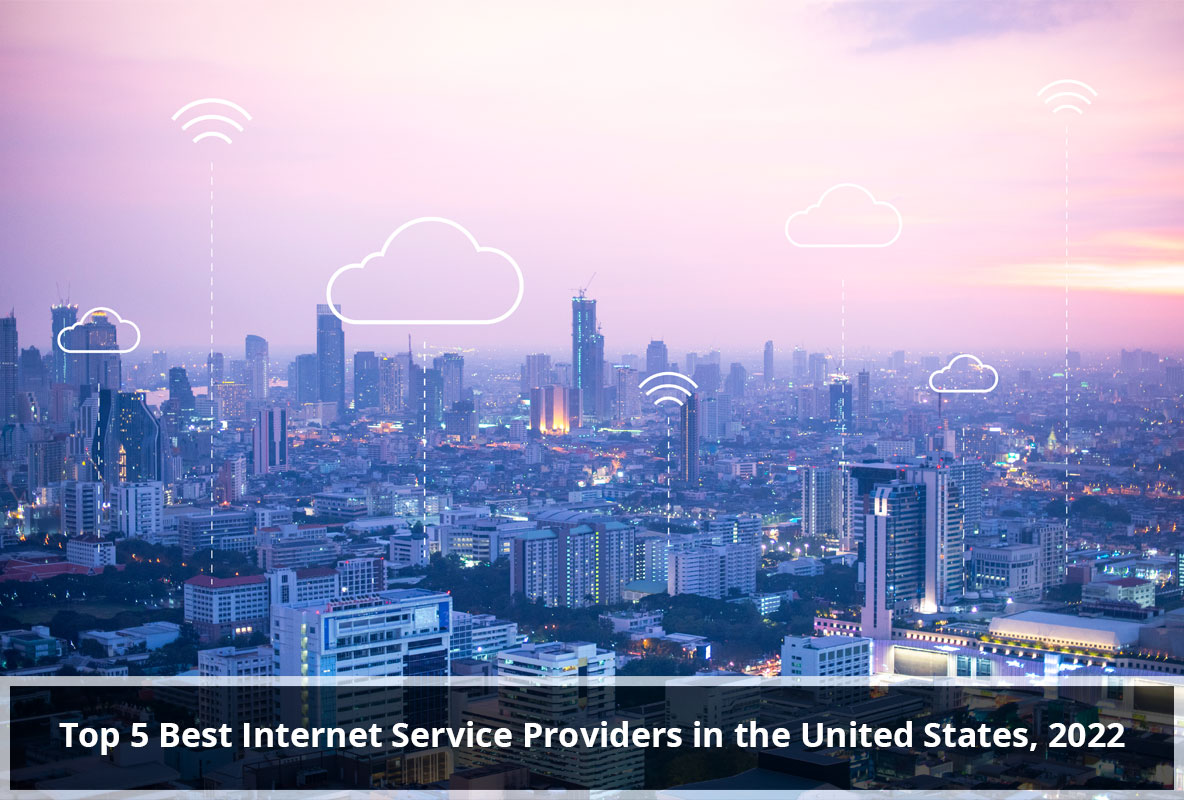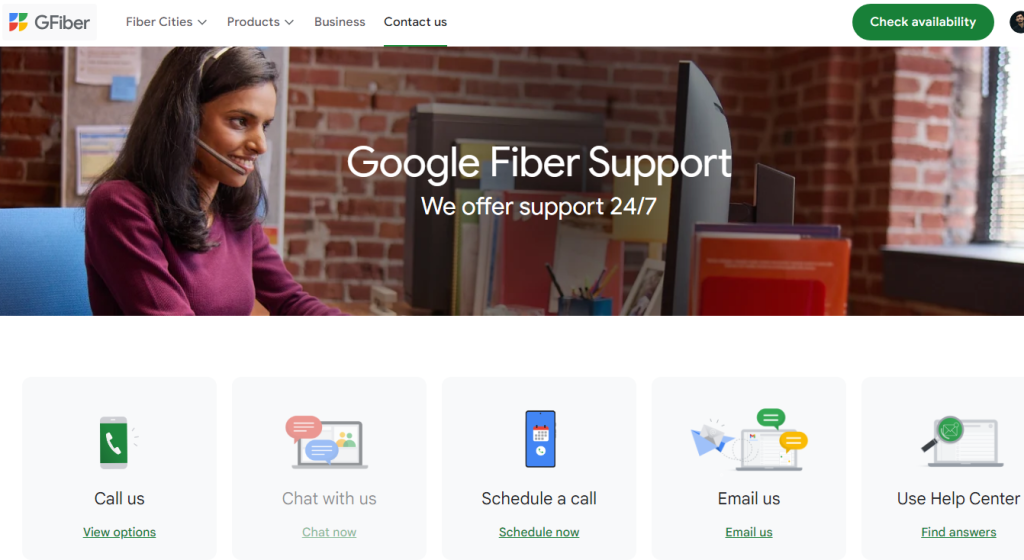Choosing the Best Home Internet Plans: Factors to Consider
Finding the perfect internet options can be overwhelming. Balancing cost, speed, and reliability is key to a seamless online experience.

Choosing the Best Home Internet Plans: Factors to Consider
Have you ever pondered which streaming service to choose, much like selecting the perfect coffee blend for your palette?
As homes become more connected, the array of internet plans and providers resembles a vast digital bazaar buzzing with options.
Finding the ideal home internet plan is akin to discovering a vital utility that seamlessly integrates into the fabric of daily life.
Introduction
The home internet conundrum is more than just an inconvenience—it's a key to unlocking an expansive world of digital content and connectivity. As various services, from online education to remote work, rely heavily on robust internet access, a sound and reliable connection becomes as essential as electricity or water.
Navigating through myriads of internet packages can seem daunting. It's about finding a delicate balance between cost, speed, and reliability.
Indeed, comprehending the diverse offerings in today's market requires a discerning eye. With technologies spanning from lightning-fast fiber to widely accessible cable, there's a solution fit for each unique digital lifestyle.
To facilitate a better decision-making process, this guide is tailored to dissect the intricacies of internet plans. Emphasizing clarity and simplicity, our aim is to empower you to make choices that resonate with your specific home internet usage requirements.
Choosing an optimal internet plan is not just about immediate gratification. It's a long-term commitment to quality, where the fine details can significantly impact your household's online experience.
Ultimately, it's about ensuring that your home's internet capability grows alongside your evolving digital demands. This guide is your compass, designed to lead you through the labyrinth of options towards a connection that best aligns with your life.
Understanding Basic Internet Terminology
Navigating internet plans begins with understanding key concepts like bandwidth, which influences how much data can be transmitted at once. Think of it as a digital highway's width.
Bandwidth is often measured in Mbps (megabits per second), indicating speed.
Terms like 'latency' refer to delays in data transmission, impacting activities like online gaming or video calls. It's the time it takes for data to travel from source to destination.
Understanding these terms is critical for evaluating how an internet plan aligns with your home's needs. For instance, higher Mbps could mean smoother streaming experiences, whereas lower latency is essential for responsive online gaming. Therefore, grasping the meaning of "unlimited" or "capped" plans can prevent unexpected slowdowns or charges.
Factors to Consider When Choosing an Internet Plan
Firstly, assess the speed necessary for your household's activities. Consider different bandwidths if you regularly stream, game, or work from home. The right Mbps count can prevent frustrating lags or buffering.
Consider data caps, which limit data usage. Select plans that accommodate your monthly consumption to avoid extra fees.
Cost implications are pivotal. Evaluate plans' total cost, watching for hidden charges that could emerge after promotional periods.
Research the provider's reliability and customer service reputation. This ensures fewer outages and support when you need it most.
Check the availability of different services in your area. Urban residents often have more options compared to rural areas.
Lastly, don't overlook the importance of compatible equipment. Ensure you have the necessary modems or routers for optimal performance.
Types of Internet Services
Exploring different internet services is paramount to drive connectivity that resonates with your lifestyle and needs. From established DSL lines to ultramodern fiber optics, the variety is substantial.
DSL, or Digital Subscriber Line, offers stability through existing telephone networks. Its speed, however, typically lags behind other types.
Cable internet harnesses the same infrastructure as cable TV, generally delivering faster speeds than DSL. It's widely available but can suffer from decreased speeds during peak usage times.
Fiber-optic services are the speed champions, offering lightning-fast data transmission that outpaces DSL and cable. Satellite internet, on the other hand, extends coverage to remote areas, though it can be affected by weather and typically comes with higher latency. Together, these services present a spectrum of options that cater to different priorities, be they cost, speed, or accessibility. Careful consideration of these types can lead to a greatly satisfying online experience.
Deciphering Internet Speeds
Grasping the significance of internet speeds is fundamental when choosing a suitable home connection. Internet speed usually refers to how much data can be transmitted from the web to your home device, measured in Megabits per second (Mbps). Faster speeds enable activities like HD video streaming, gaming, and large downloads with greater efficiency. Meanwhile, slower speeds might suffice for basic web browsing, but could falter when multitasking or during household peak hours.
When we talk about speed, it's critical to distinguish between download and upload performance. Download speed is how fast you receive data from the internet, vitally important for streaming videos or downloading files. Conversely, upload speed comes into play when you're sending data out—like uploading videos or video conferencing. Many plans skew towards higher download speeds, which suffices for most users, but for content creators or remote workers, a plan with symmetric speeds—where download and upload are equal—may be the key to a seamless online experience.
Matching Speeds to Usage
Speed is the pulse of your internet experience—essential in a world where digital seamlessly blends into daily life.
A single HD Netflix stream requires 5 Mbps, but 4K content jumps to 25 Mbps.
For households juggling multiple streams, gaming sessions, and video calls, anything less than 25 Mbps might lead to frustration, with buffering screens and sluggish downloads.
At a minimum, 100 Mbps is a robust benchmark for a modern home—catering to multiple users and devices without compromising on performance.
Understanding Impact of Upload vs. Download
The balance of upload and download speeds affects virtually every online activity in distinct ways.
- Activities like streaming movies or downloading games predominantly require higher download speeds.
- Uploading content to social media or video conferencing demands faster upload speeds.
- Online gaming relies on both, with upload speed being crucial for a smooth multiplayer experience.
Choosing a plan weighted towards download may suffice for typical web browsing and media consumption.
Upload speeds become critical for those engaged in content creation or work-from-home scenarios that involve frequent large file transfers.
Evaluating Data Policies
Understanding data caps is essential when selecting your internet plan. A data cap limits the amount of information you can download and upload over your home network each month.
Some internet service providers (ISPs) implement these caps as a means to manage network traffic, which can influence your decision if your household consumes high volumes of data for streaming, gaming, or telecommuting. Exceeding these limits may result in additional fees or throttled internet speeds.
Always inquire about “unlimited” and “no-threshold” options when discussing data policies to ensure a truly unrestricted internet experience.
Navigating Data Caps
Data caps can affect your internet utility more than you might realize. It's essential to consider how they align with your usage habits.
For those who indulge in high-definition streaming or manage large cloud backups, hitting data limits can quickly become a monthly nuisance. Therefore, robust usage monitoring tools provided by ISPs can be invaluable.
With remote work now a staple, the last thing anyone needs is throttled speeds during a video conference or while submitting crucial work files. Some ISPs offer flexible data plans that accommodate such intensive use, expanding your cap for an additional fee.
However, don't let the fear of caps lock you into overpaying for unlimited plans if your usage stays within lower tiers. Analyze your data consumption patterns meticulously before choosing.
Seek ISPs that offer grace periods or forgiveness policies for the first-time data cap breaches. These conveniences can provide a buffer while you adjust to new usage habits.
Unlimited Data Pros and Cons
Choosing an unlimited data plan circumvents the worry of hitting restrictive caps.
- Stream Without Restraint: Enjoy endless streaming, gaming, and downloading.
- No Overages Fees: Avoid unexpected charges for exceeding a data cap.
- Simplicity in Billing: Benefit from a consistent monthly Internet expense.
- Required for Certain Usage: Essential for households with high data consumption.
- Future-Proofing: As data needs grow, no plan changes are necessary.
However, these plans come at a premium and may not suit moderate internet users.
Unlimited data is a game-changer for data-intensive activities, but it could inflate costs for those with modest online habits.
Comparing Cost and Contracts
When wading into the realm of internet plans, a key point of differentiation is the cost structure and contractual terms. Initial bargains may appear enticing, but it's the ongoing monthly rates that will shape your long-term expenditure. Stay apprised of not only the promotional price but also the standard rate that ensues once the honeymoon period lapses. Scrutinize contracts for hidden fees, such as installation or equipment rental charges, which can quietly inch up your bill. It's also wise to understand the implications of a contract's tenure—early termination fees could tether you to a service that no longer meets your needs or budget constraints. Comparing costs demands diligence; be thorough to ensure the chosen plan aligns with your financial expectations and offers a fair agreement's duration.
Decoding Pricing Strategies
Understanding the pricing landscape for home internet is more nuanced than reading the monthly fee. Introductory offers can make a plan seem economical, but they often mask the true long-term cost. When evaluating these deals, it's vital to discern the actual expenses you will incur over time.
In the internet service market, new customer promotions are ubiquitous, offering lower rates for a limited period. However, once these promotions expire, standard rates can be significantly higher, affecting your monthly budget. It's essential to compare these standard rates, not just the promotional ones, to avoid unexpected spikes in your expenses.
Contracts often come with various stipulations that influence the total cost of internet service. Early termination fees, price increases after promotional periods, and equipment rental costs all must be considered when selecting a plan. Calculating the complete price over the contract term provides a clearer picture of your financial commitment.
Moreover, some providers entice customers with 'bundled' services, offering discounts for combining internet with cable TV or phone service. While these packages can seem cost-effective, ensure they align with your actual needs. Bundling services you seldom use can lead to unnecessary expenditure, negating any perceived savings.
Finally, don't overlook the potential for additional discounts, such as those for customers who opt for paperless billing or autopay. These small savings can add up over time, mitigating the overall expense of your internet service. Always inquire about all possible discounts to fully leverage the pricing strategies at play.
Identifying Hidden Fees
Hidden fees can lurk within the enticing initial offer of an internet plan, camouflaged as regulatory recovery fees or network enhancement costs. They incrementally add to your monthly bill, sometimes without clear justification. It is imperative to demand a comprehensive breakdown of all charges from the provider before signing up.
A common but often overlooked fee is the installation charge. While some providers waive this cost, others do not, leading to an unwelcome surprise on your first bill.
Further, examine the fine print for 'service protection plan' fees. These can be optional charges that providers automatically include unless you opt-out, subtly inflating the monthly cost.
Additional charges may pertain to equipment leasing. Though owning your modem and router incurs an upfront cost, it often saves money in the long run compared to month-to-month rental charges.
Remember to scrutinize costs associated with exceeding your data cap, which can be substantial if you're not subscribed to an unlimited data plan. It's vital to understand the overage fees to avoid a shocking bill if your usage exceeds the allotted quota.
Finally, scrutinize the bill for 'convenience' fees that might be charged for certain payment methods. Always confirm the most cost-effective way to pay your bill, avoiding unnecessary additional charges where possible.
Assessing Provider Performance
When evaluating potential internet service providers (ISPs), it's imperative to scrutinize their performance history, especially regarding up-time reliability and speed consistency. This involves reviewing independent consumer reports and leveraging user-generated feedback from current customers. Broadband performance can vary significantly based on infrastructure and traffic management policies, so it's beneficial to investigate localized reviews and network performance statistics in your specific area. Understanding these facets of provider performance is crucial to ensuring that the service you commit to can meet the demands of your digital lifestyle with minimal disruption.
Gauging Service Reliability
Service reliability should be a top concern as it directly impacts your online experience. Internet stability varies among providers, often influenced by their infrastructure and technological investments.
- Network Uptime - Check the provider's historical uptime metrics.
- Speed Consistency - Investigate how often speeds meet or exceed advertised rates.
- Outage Responsiveness - Look into the average resolution time for service disruptions.
- Customer Feedback - Analyze reviews for mentions of reliability or persistent issues.
- Service Guarantees - See if they offer any uptime or satisfaction guarantees.
Consistent speed and minimal downtime are hallmarks of a reliable ISP.
Investigate beyond promotional materials by seeking real-world user experiences and provider statistics.
Checking Customer Support Track Record
Evaluating customer support is paramount for hassle-free internet service.
- Research Reviews - Scour sites like Trustpilot for customer feedback on support experiences.
- Social Media Assessment - Check the provider's social media pages for public interactions with customers.
- Response Time Inquiry - Look for information on average ticket response and resolution times.
- Technical Support Accessibility - Confirm the availability of support channels (phone, chat, email).
- Direct Queries - Contact the provider with pre-sales questions to gauge responsiveness and helpfulness.
A provider's responsiveness is a critical element of customer satisfaction.
Swift and helpful customer support can make a significant difference in your overall experience.
How to Compare Internet Providers and Plans
Dig into the details of each offering.
Assess the specifics of providers' internet speeds, data allowances, and price points. One essential step is visiting comparison websites like the FCC’s National Broadband Map or BroadbandNow, which provide comprehensive overviews of internet service providers (ISPs) in your area, highlighting not only the numbers but also user satisfaction ratings. This kind of meticulous vetting is critical to ensure the offerings match your internet lifestyle needs.
Cross-reference performance claims with consumer reviews.
Focus on the value per dollar spent. Evaluate each plan's cost-efficiency by calculating the price per Mbps—this will tell you how much speed you're truly getting for your money. Consider introductory offers carefully, as post-promotional rates can significantly affect your long-term budget.
Explore discounts and promotional deals with scrutiny. It's prudent to look at long-term costs and not be swayed solely by attractive short-term discounts. Delve into the total expense over the contract term, and remember to factor in equipment rentals or purchases, as these can add up. Keep an eye out for the best bundle offers without compromising on service quality.
Additional Considerations
When assessing internet plans, hardware compatibility is a pivotal factor. The router and modem you use can significantly affect your connection's performance and overall experience.
Moreover, as the technological landscape evolves at breakneck speed, selecting scalable internet plans is crucial. An adaptable service plan will accommodate growing data demands and emerging technologies without requiring frequent overhauls or provider switches. Keep an eye out for future technologies such as 5G and next-generation fiber optics that may soon become standard offerings, ensuring your plan stays relevant.
In addition, gathering community feedback can provide invaluable insights into service quality. Local forums and neighborhood groups often share personal experiences that reveal the on-the-ground reality of an ISP’s service, possibly uncovering consistencies or issues not immediately apparent from official ratings.
Finally, it's imperative to consider the implications of locking into a lengthy contract. While a contract might offer cost savings upfront, it's important to weigh such benefits against the potential of technological advancements or life changes that could alter your internet needs. Regularly revisiting your internet plan and staying informed about new deals or advancements can ensure you maintain an optimal balance between service quality, flexibility, and price.
Making the Decision
Armed with a comprehensive understanding of your needs and the available options, you're ready to select an internet plan. Check off each consideration: speed, data caps, cost, reliability, customer service, and availability.
Cost should not be your sole deciding factor. Assess how each plan aligns with your daily digital activities.
A sensible choice balances your current usage with potential changes on the horizon. Consider contract lengths, potential moves, and rising household demands as your technology needs evolve.
Choosing the right internet plan means weighing all factors carefully and forecasting your future needs. It's like making an investment in your daily comfort and productivity. As you finalize your decision, remember to revisit your choice periodically and stay agile for changes in technology, lifestyle, or budget.
Conclusion
Having explored these facets, the path to your ideal internet service is clearer now.
Selecting a high-speed internet plan is more than a utilitarian decision; it's a step towards crafting a connected lifestyle that snugly fits your personal and professional spheres. It requires a delicate balance, considering essential parameters and foreseeing how your digital habits might progress. Ensure that your choice seamlessly integrates with both your current necessities and your aspirations for technological engagement in the future.
Ultimately, an informed decision stems from a thorough examination of your specific circumstances. Avoid being swayed solely by attractive promotions; instead, prioritize a plan that reliably shores up your online endeavors. An ideal plan will accommodate streaming marathons, facilitate efficient work-from-home setups, and keep gamers in the household lag-free—all without breaking the bank.
Conclusively, the best internet plan for you is one that stands resilient against the ebbs and flows of digital evolution. Regularly reviewing your service ensures that your internet experience continues to align with your lifestyle adaptations and the ever-progressing broadband landscape. By remaining vigilant and flexible, you secure a network that propels your online adventures today, while staying ready for the unknown innovations of tomorrow.




